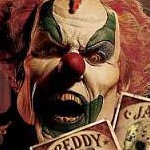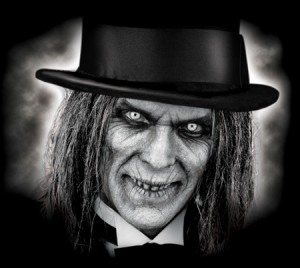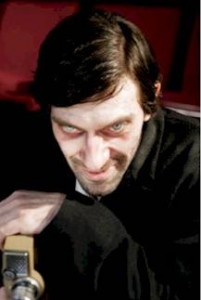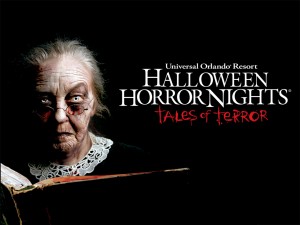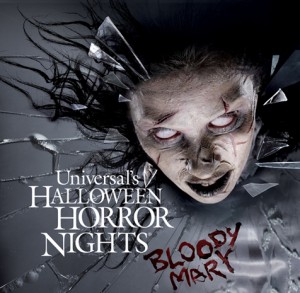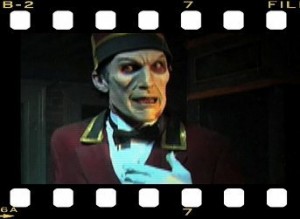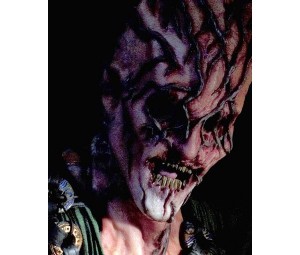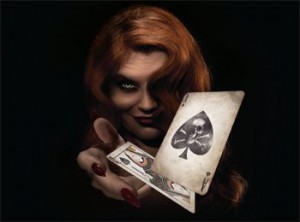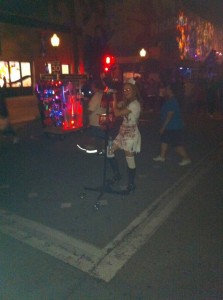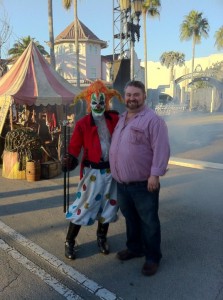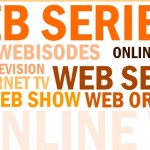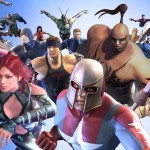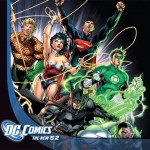 The New 52 reached the one year mark this week. At this point I think it’s time for some reflection on how the relaunch has gone. I have written several times on the overall state of the DCU, as recently as last week, so instead I want to focus on the specific books. So here is my take on the titles that comprise the New 52.
The New 52 reached the one year mark this week. At this point I think it’s time for some reflection on how the relaunch has gone. I have written several times on the overall state of the DCU, as recently as last week, so instead I want to focus on the specific books. So here is my take on the titles that comprise the New 52.
A bit of honesty first. I did not collect or read every title. It just wasn’t realistic to do so. I made my decisions as a consumer, although I did manage to read a couple of titles I didn’t collect to try them out. I’ll point out what I did and didn’t read.
With that, here we go.
The first six down.
These were the first six titles canceled by DC after the relaunch
- Mister Terrific
- Static Shock
- Hawk and Dove
- OMAC
- Blackhawks,
- Men of War
I was likely part of the crowd on this one. I did not collect a single one of them, mostly because I was not that into the characters. The exception was Hawk and Dove where it was the involvement of Rob Liefeld that turned me away. Needless to say I must not have been alone in those feelings as they were all gone by issue 6.
The Books I didn’t bother with:
As with the previous six these are titles I did not collect.
- Voodoo
- Captain Atom
- The Fury of Firestorm: The Nuclear Men
- The Savage Hawkman,
- Red Hood and the Outlaws
- Teen Titans
- Blue Beetle,
- Legion of Super-Heroes
- Legion Lost
- All-Star Western,
- Deathstroke
- Suicide Squad
- Superboy
- Stormwatch,
- Grifter
- GI Combat
- The Ravagers
- I, Vampire,
- Catwoman
For a lot of these titles, like Voodoo and Grifter, I didn’t have an interest. For Teen Titians and Superboy I was not happy with the treatment of characters I had grown attached to in the previous incarnation. For Red Hood and the Outlaws and Catwoman I actually read the first issues and disliked them enough to not want to bother collecting them.
So those are books I didn’t follow. Now on to the ones I have.
The books I decided to drop.
These are the books that I was collecting but decided weren’t ones I wanted to continue following.
Wonder Woman: I wrote a whole article on my thoughts on this one. I just did not like Brian Azzarello’s take on the character. I found her too cold and the changes in her origin did not sit right. I know a lot of people consider this one of the better books of the relaunch but I do not agree.
Green Arrow: I was not originally going to collect this title, but found myself really enjoying the first issue and decided to collect it instead of Catwoman. I got a kick out of the first six issues and thought this was going to be a high point of relaunch. However with issue seven writer J.T, Krul was replace with Ann Nocenti, and the quality went south right away. I realized that I was finding myself confused half the time about what the hell was going on. I dropped the book after issue ten.
The Books I have been following that are not living up to the expectations:
This is a tricky one. I am still enjoying these titles enough to keep collecting them. However I just feel they are not quite up to snuff so they are usually that last ones I read in the weeks they come out. I’d say a couple of them are in risk of being dropped if the quality dips much more.
Justice League: Yep, the cornerstone title of the whole New 52 relaunch and I have problems with it. I think a lot of my problems here are an issue with the tone of the series. I find it more cynical than I would expect with the League. Most of the characters are portrayed as arrogant, even if that is not their portrayal in their own books. Even Superman comes off this way. I am especially surprised at the writing of Green Lantern as he is not acting like he does in his own book despite the fact that Geoff Johns writes both. This even happens in the Shazam back up feature where Billy Batson has gone from a good hearted kid to a jaded brat.
Superman: This is a book I really wanted to love, but instead I just like it in a lukewarm way. I think its problems can be explained by the fact that the writers have really had their hands tied. I already wrote a lot about this back in June. Basically issue #1 felt like being dropped in the middle of a story and that feeling has persisted. The individual issues can be good, but as part of a whole tapestry not so much. And I find this insane considering it has been written by both George Perez and Keith Giffen. I am also just infuriated with the lengths being taken to keep Clark and Lois apart. Clearly it is not as bad as the complete ass pull Marvel performed to split up Peter Parker and Mary Jane, but it is beginning to feel a close second. Superman Group Editor Matt Idelson has gone as far as to say Lois and Clark will not get together at all on his watch.So basically it is a book that can be good, but not consistently.
The Flash: I’ll be honest this book confuses me. On one hand Francis Manapul is doing a great job exploring the Flash’s powers and his conflicts on being the Flash. On the other hand Barry Allen is coming off as a rookie superhero. If this book was set five years ago like Action comics and it was the beginning of his career it would make sense, but that is not the case. There is also the issue of Barry no longer being with Iris, who in old continuity was his wife. Here, unlike in Superman, it feels more organic, especially as you get the feel that despite the obstacles they will eventually get together.
Green Lantern: New Guardians: The weak link in the Green Lantern line. Again it has its moments, but I think it suffers from too big a cast and not a lot in the way of focus. It started with a great concept, Kyle Rayner suddenly having a ring of every color, and just as quickly dropped that idea to make it a team book, about a team that has members who have no real reason to work together. Not an impossible task to make work but the execution has been very uneven. Later issue have improved on this, but it still has a way to go.
Justice League International: I have enjoyed this book even though I feel there have been a lot of flaws. Sadly the flaws have been enough that this book was never widely embraced and is being canceled. The book’s strength has been the characters. Booster Gold managed to retain the character growth from pre-flashpoint, even if he lost the story. The August General in Iron actually had a character arc and growth which I would not have thought possible from his earlier appearances. Unfortunately this great character work was bogged down in some very cliché story telling. The JLI was sponsored by the U.N. but several members objected, their first threat was an alien intent on destroying the world, and only they, and no other superheroes were there to fight him. They were unpopular with the public and a terrorist group used that to try to destroy them.
Resurrection Man: Here is another book I was really excited about. I loved the original series in the 90s and was always hoping to see this character return. And even better the original creators Dan Abnett and Andy Lanning were writing it. But after the first few issues it was clear this was not the same series as before. First off it seemed to be a true reboot with the character starting off in the exact same situation he started off the old series. Again it was not a bad book; it just wasn’t exciting me that much. I think part of it is that in the old series Resurrection Man was very much involved in the DC Universe. In the new series this could have been an independent comic with no changed needed at all. This is another book that is being canceled.
Birds of Prey: I will admit I may be a bit harsh on this book. The original series was written by Gail Simone, one of my favorite comic book writers. So this book not being written by her could only suffer. Also the heart of the old series was Barbara Gordon as Oracle. Barbara is still in the series as Batgirl, but she is not team leader, Black Canary is. And you also have several team members that do not fit. In particular you have Poison Ivy on the team. Yes she is often a sympathetic villain, but she is still a villain. And big surprise, the current story line has her betray the team and force them to help her in her extreme agenda. You could have taken bets on when this was going to happened.
The books that have met my expectations.
This next set is the books that are performing exactly as I had expected. I enjoy each one and none are in any danger of being dropped.
Detective Comics and Batman: the Dark Knight: I’ll just do these two together. They are both solid Batman books. I know that grouping them like this makes them seem interchangeable, but in this case it is more that continuity in the entire Batman book line is strong right now so they do not feel like they are happening in two different worlds.
Batwoman: I have a weird relationship with this book. I really like it, and think that J.H. Williams and W. Haden Blackman are doing a suburb job writing it. But it is not as good as when Greg Rucka was writing the original series. I guess it is a repeat of my complaint about Birds of Prey, but without the other weaknesses I see in that book. I especially enjoy how they are doing a Tarantino and jumping around in different time frames to tell the story.
Batman Incorporated: This was a late starter being one of the replacement books after 6 months. This is a solid continuation of what Morrison was doing with this title prior to the New 52 relaunch.
Nightwing: Of all the Non-batman staring books in the Batman line this is the most tied in to the overall continuity. It makes good use of Dick Grayson’s history as well. My only complaint is the change of the costume making the formerly blue parts red. However I do get that this is done to create a visual connection to the other Robins. Every one of them has red as the dominate color of their costume.
Action Comics: Another of the cornerstone books for the New 52. It works really well as a “Superman year one” style book. Grant Morrison does a great job telling the story of a young superman still learning about his powers and figuring out what kind of hero he wants to be. While I do enjoy the book I do have a couple of complaints. The first has nothing to do with the book itself. It is just that Action Comics was one of the longest running titles, reaching issue #904 prior to the relaunch. It was set to be the first comic to reach issue #1000. The mandate that all New 52 titles start with issue #1 has disrupted that. My hope is that at some point DC decides to honor this milestone and restore the original numbering. The other complaint is that I can’t help but feel like this book is more of a well written Elseworld title, then a cornerstone of New 52 DC Universe.
Green Lantern: The Flagship of the Green Lantern books. Like the Batman books this entire line largely ignored the reboot of the DC Universe and is continuing with the story that Geoff Johns has been telling for the last 7 years. Combine this with the fact that it is largely set off Earth and it might as well be in the old DCU. On the other hand that history allows for the continued character arcs Johns has been playing with to continue and thrive.
Red Lanterns: The odd duck of the Green Lantern books. When it started I was not sure how you could sustain this book due to the almost feral nature of most Red Lanterns. To be honest around the same time that I dropped Wonder Woman I was considering dropping this title as well. But the book turned itself around by making some of the Red Lanterns more intelligent and introducing a human Red Lantern. The story telling became more focused and I have found myself enjoying it.
Dial H: Another of the 6 month in replacement books. It is a revamp of the old Dial H for Hero book. Had this book been released prior to the New 52 I am convinced it would have been a Vertigo title. Fantasy author and first time comic writer China Mieville has taken a basically juvenile power fantasy concept and made it grand ancient alien conspiracy.
Earth 2: Really the jury is still out on this one. Of the 6 month in replacement books this one has had the slowest buildup. I am certainly enjoying it right now, but I do not feel that it has settled in to its story arc yet.
The books that have exceeded expectations:
These are the top drawer books for the New 52, the ones that I read first when I get them. Basically these are the ones that I feel have made the New 52 a success even if a flawed one.
Aquaman: File this one under “who knew”. For years writers have been trying to figure out what to do with Aquaman. This is compounded by the meme that Aquaman is a lame character based solely on how he was portrayed on the Super Friends. Geoff Johns took that meme and turned it on its head. It is a combination of deconstructing the meme, thinking logically about the real extent of Aquaman’s powers and how they work, and exploring his back story. I’m not kidding when I say that on the weeks this title comes out it is the first one I read.
Batman: Remember how I said that the Batman books had the best internal continuity of all the DC titles, well this book is the anchor point. In prepping for this article I asked my friend Aron who runs The Dreaming Comics and Games what is his bestselling title for the New 52. His answer was this one. I think a lot of credit goes to Scott Snyder’s writing. He is quickly becoming one of my favorite comic writers. One point is that this book does the best job of exploring Bruce Wayne as Bruce Wayne. So many books treat Bruce as simply Batman’s disguise, but Snyder goes for something deeper.
Batman and Robin: This is a close second to being the best Batman book. Here you have Peter Tomasi really exploring the Father/Son dynamic between Bruce and Damian Wayne. Tomasi is another writer, like Scott Snyder where they are getting to the point where I will check a book out simply because they are writing it.
Batgirl: I’ve already mentioned that Gail Simone is one of my favorite comic book writers and if anyone was going to handle Barbara Gordon becoming Batgirl again correctly it is her. Despite all my misgiving about this one aspect of the New 52 that I have written about before, I love this book. That’s right, even though I find how DC has handled the issue of what happened to Stephanie Brown rage inducing, it has not dampened how much I enjoy this title. Gail writes Barbara as a slightly broken character that never the less has the strength to get beyond that and be a hero. Too make a character simultaneously broken and strong is no small feat and here it is done masterfully.
Batwing: This book just caught me off guard. Judd Winick is one of the most inconsistent writers in comics today. He wrote a Catwoman book so bad I refused to pick it up, but is writing a new Bat character so well that he is becoming a favorite of mine. I think Winick, who is often a writer who falls back on social agenda writing has done good job of balancing the issues a character for the Democratic Republic of Congo is going to face, with telling a good superhero story.
Green Lantern Corps: Oh look, another book written by Peter Tomasi. This is the strongest of the Green Lantern books. It is the one doing the most to move forward the threat of the Guardians of the Universe plot. As its name implies, it makes use of the entire corps and feels like the stakes are truly universal.
Justice League Dark: Aron at the Dreaming says that for his store this title slightly outsells the main Justice League book. It was a decent book under Peter Milligan and would have probably ended up in my meets expectations category, but then Jeff Lemire took over and this title just took off. Lemire obviously loves the fringes of the DC Universe. This book also builds on a lot of ideas from the vertigo books that many of its characters come from.
Swamp Thing: At this point it should be clear that certain writers are really bringing their A game for the New 52. Here Scott Snyder gets to show his chops as a horror writer. He also has built on the Swamp Thing mythology in a way that has found a way to make sense with what the DC Dark titles are doing without ignoring the great stories that made Swamp Thing a cornerstone character for so many years.
Animal Man: The companion book to Swamp Thing in that they are telling the same story from two different angles. Jeff Lemire has taken this superhero character and turned the book into one of the best horror title in years.
Frankenstein, Agent of S.H.A.D.E.: This book is a kick in the pants. While Jeff Lemire has made Superhero Animal Man’s book into a horror title, he has took horror character Frankenstein and turned the book into the spiritual successor to Grant Morrison’s Invisibles. This got taken to 11 when Matt Kindt took over the book after issue #8. There is just a level of crazy in this book that is written so consistently that once you read a couple of issue you can buy completely into it. Half the fun of this title is just following along with the various concepts that Kindt introduces.
Demon Knights: This was easily one of the best books of the New 52 right from the start. Set in the medieval past and playing with several characters in the DC Universe that are immortal, Paul Cornell has built a grand fantasy epic. The best part for me is having immortal villain mastermind Vandal Savage portrayed in this title as a boisterous, life-loving barbarian warrior who is one of the heroes.
Worlds’ Finest: Where Earth 2 is a book I am still a bit on the fence about, its companion book has no such issues. This book has a very solid hook that Power Girl and Huntress are the Supergirl and Robin of Earth 2, trapped on Earth Prime and wanting to go home. Veteran writer Paul Levitz, who originally created the Huntress, puts the focus of the series on the relationship between the two heroes and their quest to go home. The chemistry here is perfect.
So there you have it, my take on the state of the current New 52 titles. Overall I like what I see right now, but it is definitely a mixed bag. My biggest concern is that the DC Universe no longer feels cohesive, and I think that is due to there not being a clear overall plan.
I am sure I will revisit the line again as there is a lot going on over at DC right now.
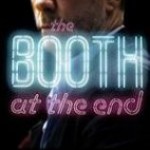 I recently discovered the Booth at the End during a very boring Saturday. With nothing better do due I decided to check this show out after seeing it advertised several times on Hulu. This became one of those odd moments where I (A) wanted to kick myself for not finding it sooner and (B) was glad that I was able to watch the first two seasons all in one go.
I recently discovered the Booth at the End during a very boring Saturday. With nothing better do due I decided to check this show out after seeing it advertised several times on Hulu. This became one of those odd moments where I (A) wanted to kick myself for not finding it sooner and (B) was glad that I was able to watch the first two seasons all in one go.
